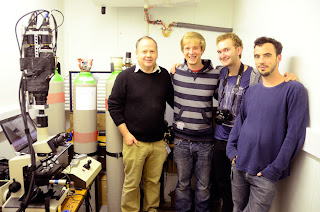
The handsome tree bumblebee arrived in Britain ten years ago - not a human introduction, but a range expansion possibly due to climate change. There have been a couple of records in the county, but on Sunday we encountered a few in Holyland Woods in Pembroke.
This distinctive bee is easy to identify (can't be confused with any other bee species). It is associated with trees and woodland, and nests in tree holes or other crevices well above ground. It isn't aggressive unless trapped - like other bumblebees.
If you see one, please send us the record
rushmoor1@tiscali.co.uk together with a photo if possible, and I'll add them to the local and national database.
More info at
BWARS website (Bees, Ants and Wasps Recording Society) If you send a record directly to BWARS, please copy it to us for our local records.
Any other bee records gratefully received
 These caterpillars are mostly in their final stage. They are the result of a mating on 27 4 11. In their younger stages they were nondescript black creatures. Now they are most spectacular. They are voracious feeders. Luckily there is a supply of Meadowsweet and Ling fairly near.
These caterpillars are mostly in their final stage. They are the result of a mating on 27 4 11. In their younger stages they were nondescript black creatures. Now they are most spectacular. They are voracious feeders. Luckily there is a supply of Meadowsweet and Ling fairly near.


























